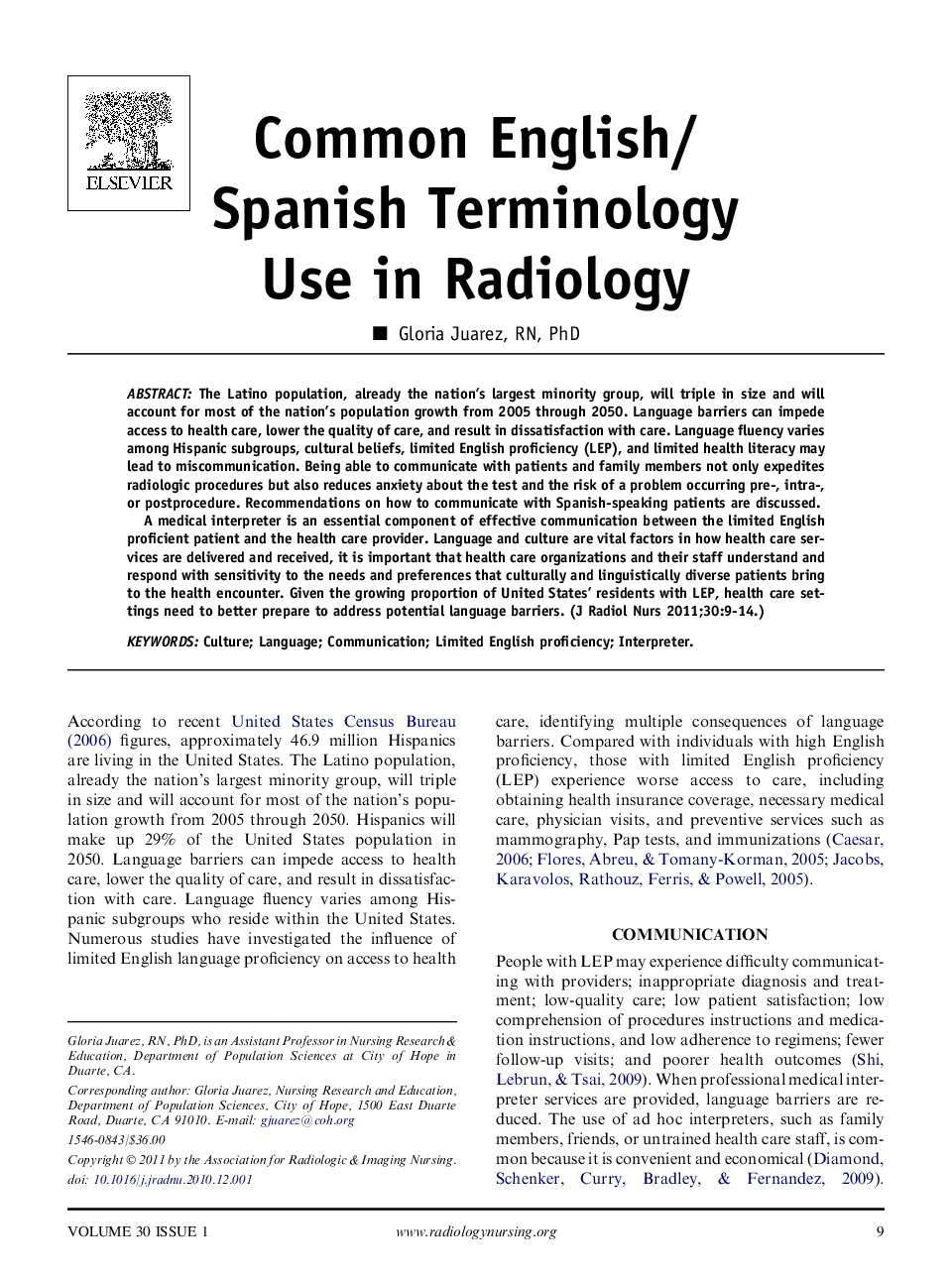| Article ID | Journal | Published Year | Pages | File Type |
|---|---|---|---|---|
| 2673444 | Journal of Radiology Nursing | 2011 | 6 Pages |
The Latino population, already the nation’s largest minority group, will triple in size and will account for most of the nation’s population growth from 2005 through 2050. Language barriers can impede access to health care, lower the quality of care, and result in dissatisfaction with care. Language fluency varies among Hispanic subgroups, cultural beliefs, limited English proficiency (LEP), and limited health literacy may lead to miscommunication. Being able to communicate with patients and family members not only expedites radiologic procedures but also reduces anxiety about the test and the risk of a problem occurring pre-, intra-, or postprocedure. Recommendations on how to communicate with Spanish-speaking patients are discussed.A medical interpreter is an essential component of effective communication between the limited English proficient patient and the health care provider. Language and culture are vital factors in how health care services are delivered and received, it is important that health care organizations and their staff understand and respond with sensitivity to the needs and preferences that culturally and linguistically diverse patients bring to the health encounter. Given the growing proportion of United States’ residents with LEP, health care settings need to better prepare to address potential language barriers.
